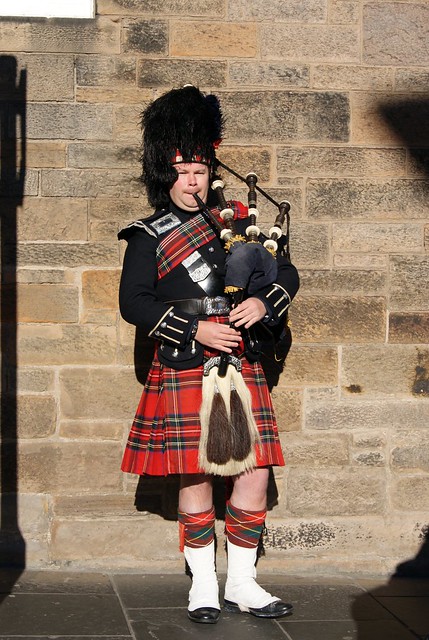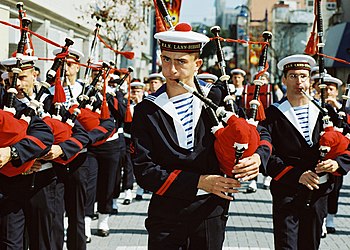 |
| Uillean pipes - practice set (Photo credit: Wikipedia) |
Irish bagpipes
The Irish bagpipe, or the Uilleann bagpipe, is the national bagpipe of Ireland. It produces a wide range of notes that are distinctly sweet in tone, distinguishing it from other types of bagpipes.
Irish bagpipes are made with a set of bellows designed to be wrapped around the right arm and the waist to inflate the pipe bag. Its chanter produces sound in two full octave ranges including the flats and the sharps. It is typically designed to be played indoors while sitting down.
Kinds of bagpipes
Irish bagpipes come in three different kinds, each ranging from the level of knowledge of the user in playing bagpipes.
1. Irish practice set bagpipes - these are bagpipes best used by beginners and young players. They usually consist of a pipe bag, a chanter, and bellows. The beginner set's chanter can be played in the concert pitch D or B flat.
2. Irish half set bagpipes - this set is designed for average or intermediate players, mastering the practice set for at least a year. It has a tenor, baritone, and bass drone. A stock connects these drones to one another and ties them to the bag. The drones can be switched off using a key attached to the stack.
3. Irish full set bagpipes - for expert players, the Irish full set bagpipe is perfect. It is made of complete Uilleann pipes. It is essentially a half set made with additional three regulators.
Tips
When looking to buy an Irish bagpipe, look for one that is leak resistant. Make sure that it is not susceptible to air leaks. Choose a pipe bag made from elk-tanned leather and bellows made of a heavy-duty leather gusset.
|





